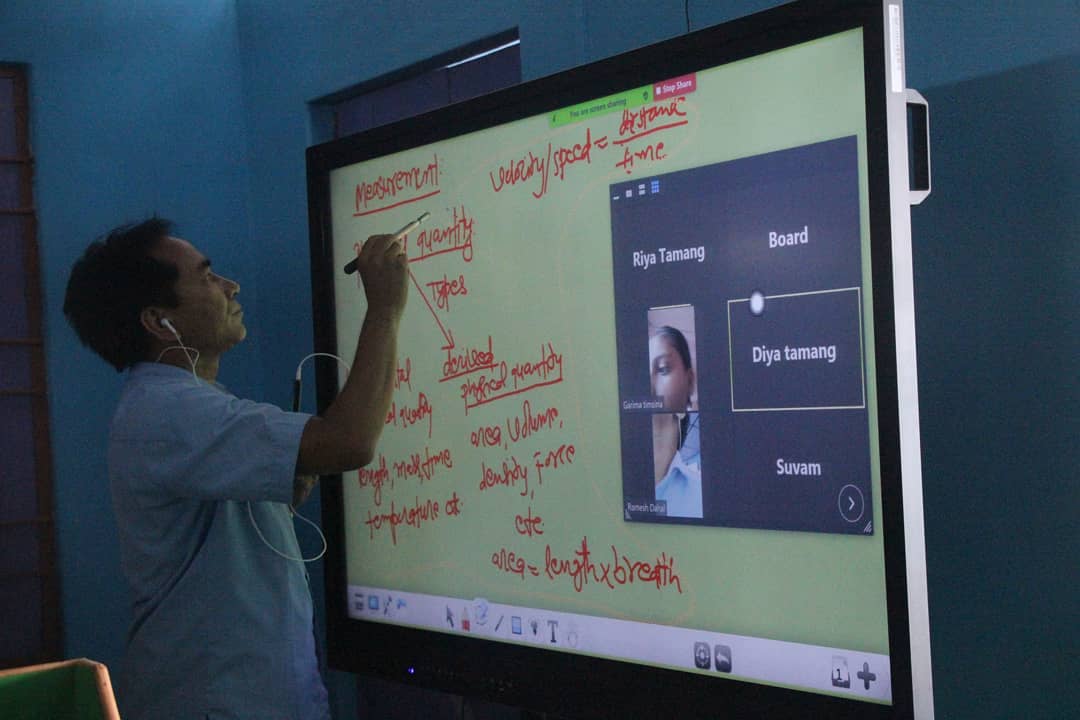The digital divide – III by Parwat Portel

Photo: Parwat Portel/ photo.circle
For 20 years Ramesh Kumar Dahal, 50, has been in classrooms standing in front of blackboards teaching the next generation. Lately, however, a smartboard has replaced the blackboard.
When Dhulabari Secondary School switched to online teaching due to the COVID-19 pandemic, Dahal needed to adapt to this sudden change in the teaching module. “ I used to be scared of technology, but time and necessity change people,” he says.
Every morning, Dahal arrives early at school and prepares for classes and presentations. At exactly 9 AM the classes start. The smartboard initiative was funded by the provincial government, and they also provided basic training to the teachers on how to use the smartboard.
While the online classes were originally designed for all students, only those with an internet connection, a computer, or a smartphone have been able to take advantage of the offer. “This is not an equal system, and we are leaving the other students behind,” says Dahal.
Meanwhile, Damodhar Dhungel has been teaching those students who cannot attend online classes via Radio Saathi. He argues that while the radio initiative is good, it comes with its own set of challenges, “It is hard to listen, concentrate and follow a radio lecture,” he says, “And there is no one around to clarify when students don’t understand.”
Text and photos: Parwat Protel @parwatportel7
Edit: Mallika Aryal @mikaness
#NepalPhotoProject #digitaldivide #onlineclassroom #covid19 #nepal #jhapa
